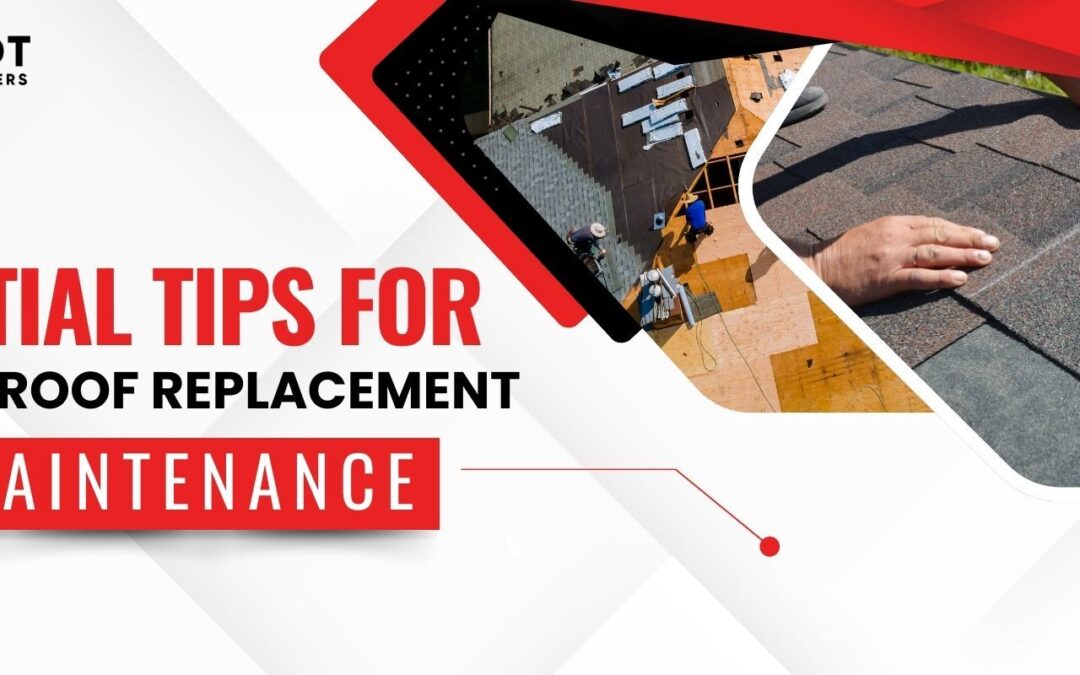A roof is not just the first layer of protection for a building; it also plays a crucial role in maintaining energy efficiency and structural integrity. Over time, even the best-constructed roofs can deteriorate, leading to issues that might require interior roof replacement.
Roof replacement addresses the layers beneath the surface to strengthen, insulate, and protect your property from the elements. For long-lasting roof health, it’s equally important to adopt regular service roofing practices, which include inspections and maintenance.
What Is Interior Roof Replacement?
Roof replacement refers to the process of replacing internal roofing components, including insulation, framing, and other layers, that lie beneath the exterior surface.
Unlike exterior replacements focused solely on shingles or tiles, interior replacement involves addressing the internal layers of the roof structure. It’s essential in cases of water damage, structural deterioration, or insulation failures that compromise the building’s integrity.
A proactive approach to interior replacement helps prevent costly repairs down the road, as it ensures your home or building remains safe, well-insulated, and moisture-free.
What Does Roofing Service Involve?
Roofing service consists of ongoing maintenance practices designed to extend the life and performance of your roof. It typically includes tasks like clearing debris, conducting regular inspections, detecting leaks early, and repairing minor issues before they escalate.
By adopting roofing service practices, property owners can maintain the roof’s durability, manage energy efficiency, and keep interior spaces safe from weather-related damage. Regular service roofing is essential for identifying potential issues and addressing them promptly, preventing costly repairs and replacements in the future.
Key Differences Between Interior and Exterior Roof Replacement
Understanding the differences between interior and exterior roof replacement can help property owners decide when and where to invest in their roofs.
- Scope of Work: While the interior involves the internal structure (such as insulation, sheathing, and framing), exterior replacement focuses on visible components like shingles, tiles, and waterproofing membranes.
- Cost and Time Requirements: Generally, interior replacements are more complex and time-intensive, especially if structural repair is required. Exterior replacements may be less expensive unless widespread damage is present.
- Materials and Techniques Used: Exterior replacements use weather-resistant materials like shingles, while interior replacements involve insulation, moisture barriers, and structural materials to enhance internal strength and efficiency.
Signs You May Need Roof Replacement or Roofing Service
Knowing when to invest in roof replacement or engage in routine service roofing can save property owners from sudden, costly issues.
- Visible Water Damage: Stains on ceilings, mold growth, or water spots on walls are clear indicators of water leakage that could necessitate interior roof replacement.
- Sagging or Weak Spots: Noticeable sagging on ceilings or cracks can signal structural weaknesses that need immediate attention.
- Recurring Leaks Despite Repairs: If you notice that leaks reappear despite external repairs, it might indicate a problem within the roof’s internal layers, requiring an interior replacement to properly address the issue.
The Process of Roof Replacement
Roof replacement involves a structured process to ensure comprehensive and effective restoration. Here’s what to expect during the replacement process:
- Initial Inspection: Professionals start with a thorough inspection of the roof’s internal components to identify all damaged areas, including the insulation, framing, and underlayment.
- Removal and Repair of Damaged Areas: Damaged internal layers are carefully removed and disposed of. Any structural damage to framing or support beams is repaired, ensuring the roof remains strong and secure.
- Reinstallation of Roofing Components: New insulation, sheathing, and other necessary materials are installed. High-quality insulation helps maintain temperature control, while sheathing provides a solid base for exterior materials.
Benefits of Routine Roofing for Long-Term Roof Health
Routine roofing service offers numerous benefits, allowing property owners to enjoy a sturdy, long-lasting roof that protects their property and reduces repair costs over time.
- Extends Roof Lifespan: Regular maintenance helps prevent wear and tear, ensuring the roof’s structure remains intact for years.
- Reduces Repair Costs: Addressing minor issues during roofing service inspections can help avoid more extensive and costly repairs later on.
- Improves Energy Efficiency: By maintaining insulation, and ventilation, and addressing leaks promptly, roofing service helps optimize energy usage and maintain comfortable interior temperatures.
Conclusion
Investing in interior roof replacement and regular service roofing is essential for maintaining a healthy, durable roof that protects your property from environmental stressors. Roof replacement is a more extensive process but offers significant benefits in insulation and structural integrity. Routine roofing service, meanwhile, is the foundation of a preventative maintenance approach, helping extend the roof’s life and save on repair costs.

